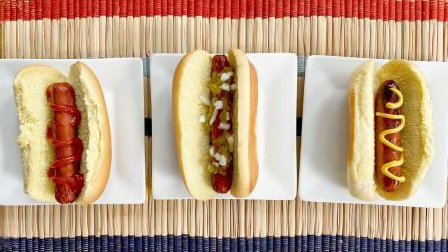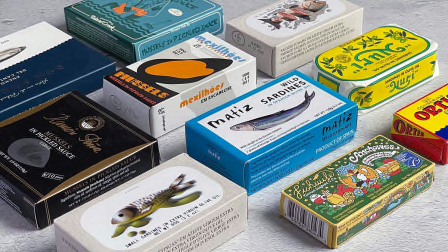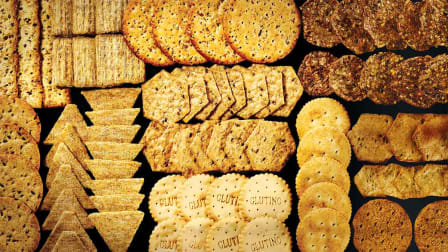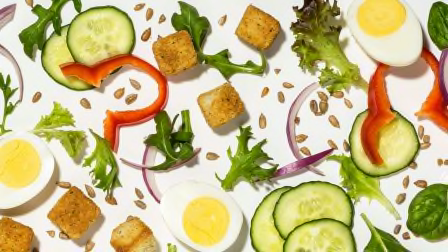Best Canned Cocktails
We tried a rum classic from Bacardi, a tequila concoction from Cutwater, a Cosmo by Sarah Jessica Parker, and several other canned alcoholic drinks
When you shop through retailer links on our site, we may earn affiliate commissions. 100% of the fees we collect are used to support our nonprofit mission. Learn more.
Five years ago, I wouldn’t have thought that in 2024 I’d be drinking cocktails from a can, but canned cocktails, or ready-to-drink cocktails, have grown popular in recent years. Like hard seltzers, these cocktails can be easily tossed into your bag or a cooler for a trip to the beach, a picnic, or a potluck.
Best Canned Cocktails
Editor’s Choice: LiveWire Rocket Queen
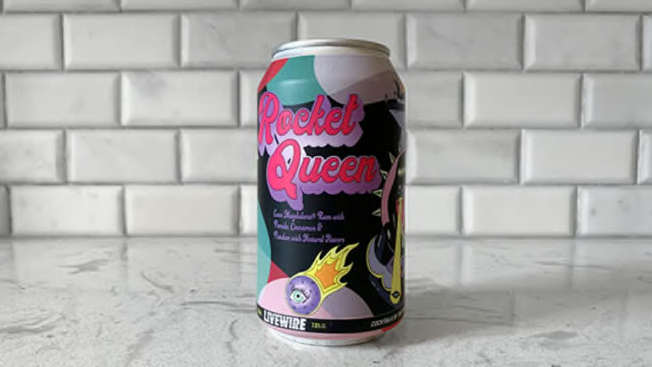
Photo: Angela Lashbrook/Consumer Reports Photo: Angela Lashbrook/Consumer Reports
Base spirit: Rum
ABV: 7.5%
Price: $22.99 for a pack of 4
Where to buy: LiveWire
Wow! This was a delightful surprise. The first flavor I got from this was coconut, though there’s no actual coconut in the drink itself. Instead, the Rocket Queen is a Magdalena Rum-based cocktail with pomelo, pandan (an plant commonly used in Southeast Asian dishes that adds a floral and coconutty aroma), cinnamon, and absinthe. It’s an interesting experience, and I mean that in the best way: I’ve never had anything like it. Its uniqueness may be to its credit because I have no theoretical fresh version to compare it with. Like most of these canned cocktails, it’s on the sweeter side, but it’s not overwhelmingly so and is considerably more defined by its aromatic complexity. I wouldn’t recommend this to folks who don’t like nutty, floral, herbal flavors, but I urge everyone else curious about canned cocktails to start here.
The Party Pick: Cutwater Tequila Paloma
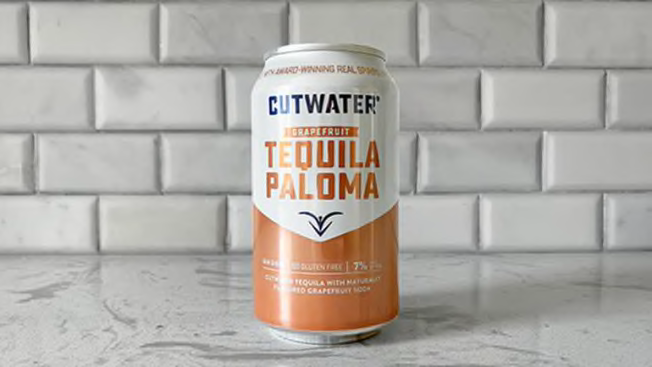
Photo: Angela Lashbrook/Consumer Reports Photo: Angela Lashbrook/Consumer Reports
Base spirit: Tequila
ABV: 7%
Price: From $11.99 for a pack of 4
Where to buy: Target
A paloma is a smart choice for a canned cocktail because it uses soda, not fresh fruit juice, as a mixer. The Cutwater Tequila Paloma is a mild, if faithful, version of a bar paloma, and I would happily drink another. It’s refreshing, lightly citrusy, and not unbearably sweet. It’s also great to have when hosting a house party: The price is reasonable, it’s widely available, and it’s almost impossible not to like. This also means it won’t really stand out; you drink it to chill out and have fun with friends, not to contemplate the subtle hints of black pepper and agave from the brand’s proprietary tequila, which is used in this cocktail. Buy this instead of the hard seltzer you usually get for your house parties.
The Surprise Hit: Bacardi Mojito Rum Cocktail
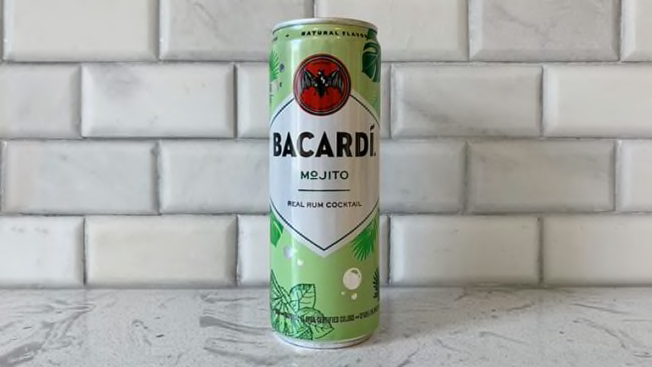
Photo: Angela Lashbrook/Consumer Reports Photo: Angela Lashbrook/Consumer Reports
Base spirit: Rum
ABV: 5.9%
Price: $14.99 for a pack of 4
Where to buy: Instacart, FreshDirect
Were I to—for some reason—find myself at a college party, I’d hope to find the Bacardi Rum Mojito in an ice bucket. Sure, it’s sweet, and it doesn’t much resemble a real mojito. Frankly, it tastes like a spiked Sprite. But it’s delicious for what it is: a simple, somewhat immature, obscenely drinkable canned cocktail that I’d feel happy to sip in someone’s backyard in the middle of an August heatwave, straight from the can—no glass of ice necessary. Don’t go into this expecting complexity, because you’re not going to get it. What you’re going to get is a fun time.
The Splurge: Dashfire Old Fashioned
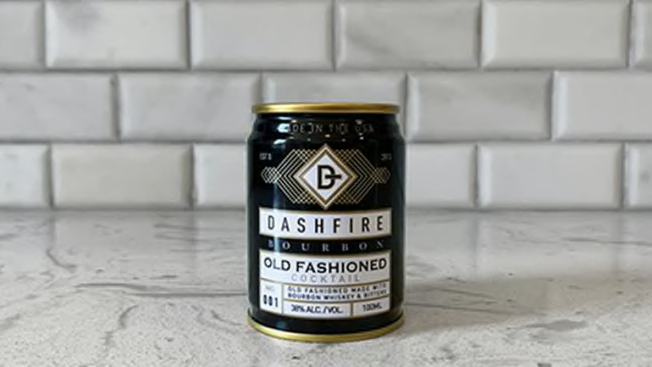
Photo: Angela Lashbrook/Consumer Reports Photo: Angela Lashbrook/Consumer Reports
Base spirit: Bourbon whiskey
ABV: 38%
Price: $6.99 for 1
Where to buy: FreshDirect
This little can packs a punch. It might look small, but pour it over a big ice cube and you’ll have more than enough old fashioned to keep you happy. It has a rich, deep cherry flavor characteristic of that cocktail made with bourbon, which itself tends to be a sweeter whiskey than rye, which is spicier. It’s well-dosed with four of the company’s proprietary bitters (Dashfire is primarily a bitters company), and that comes through in the cocktail, which is aromatic and has a hint of dry orange peel.
It’s on the sweeter side, though, and might not appeal to hardcore old-fashioned fans. My husband, who rarely strays from his regular order of an old fashioned, wasn’t into the canned version. But as someone who enjoys an old fashioned on occasion but for some reason can never quite nail it when I make one for myself at home, I would have finished the entire thing if I didn’t have a few other cocktails to sample. It tastes much better than any of my own attempts, though it’s not quite the quality that old-fashioned aficionados can expect from a good bar or restaurant.
The Negroni for Newbies: Tip Top Negroni
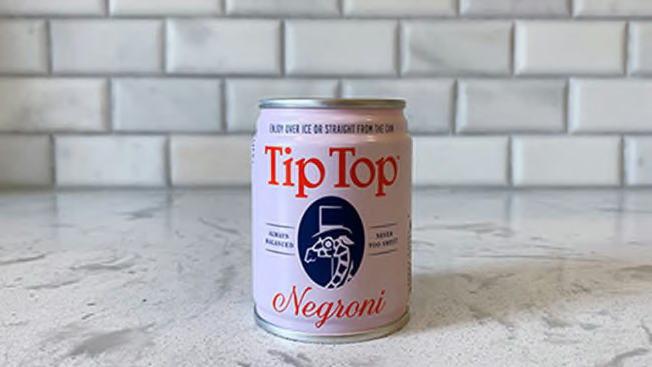
Photo: Angela Lashbrook/Consumer Reports Photo: Angela Lashbrook/Consumer Reports
Base spirit: Gin
ABV: 26%
Price: $39.99 for 8
Where to buy: Tip Top
I’m a serious Negroni drinker. It’s my favorite cocktail, and I’m extremely picky about how I like it. They’re more balanced if they’re made using a dry London gin rather than a sweeter American style, they’re far better with Cocchi or Carpano Antica than Martini & Rossi vermouth, they should be slightly more bitter than sweet, they should be served over ice, not up, and they should never, ever be shaken.
A Negroni isn’t for the faint of heart or palate.
The Tip Top Negroni is a loyal interpretation. It’s a flavor punch, coming at you from all sides: bitter, sweet, and boozy. It’s on the syrupy side for a Negroni, though, so it doesn’t adhere to my extremely particular specifications. But it’s an otherwise decent, inoffensive drink that I would recommend for those who are inexperienced in the Negroni arena and generally prefer a sweet but intense cocktail. Bonus: The packaging is adorable. Consider this, perhaps, as a party favor or stocking stuffer.
Worst Canned Cocktails
The Letdown: Death & Co Aurora Highball
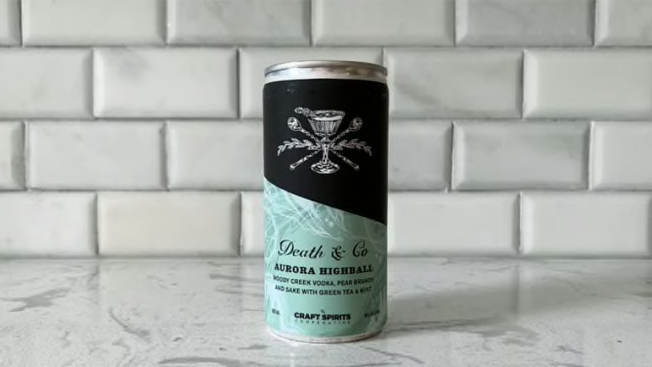
Photo: Angela Lashbrook/Consumer Reports Photo: Angela Lashbrook/Consumer Reports
Base spirit: Vodka
ABV: 8%
Price: $24.99 for a pack of 4
Where to buy: FreshDirect
Theoretically, this cocktail has everything going for it. It’s created by Death & Co, one of New York City’s most legendary bars. Its list of ingredients sounds delicious and complex: Woody Creek Distillers Vodka, Clear Creek Pear Brandy, Junmai Sake, green tea, and mint syrup. It’s midrange in terms of price and widely available online.
While it’s certainly not bad, it doesn’t match up to most of the other cocktails I tried. The drink is oddly bland. The mint and green tea are nearly undetectable. Vodka and the lightly sweet pear brandy are this drink’s primary flavors, and even they struggle to break through. If you were to approach this cocktail expecting a delicately flavored seltzer, I think you might be pleased by its subtle fruitiness and gentle sweetness. But a highball, though more subdued than its stronger, shorter brethren, nevertheless should have a vivacity that breaks through its bubbles. In the Aurora, flavor takes a back seat.
Unforgivable: Thomas Ashbourne The Perfect Cosmo by SJP
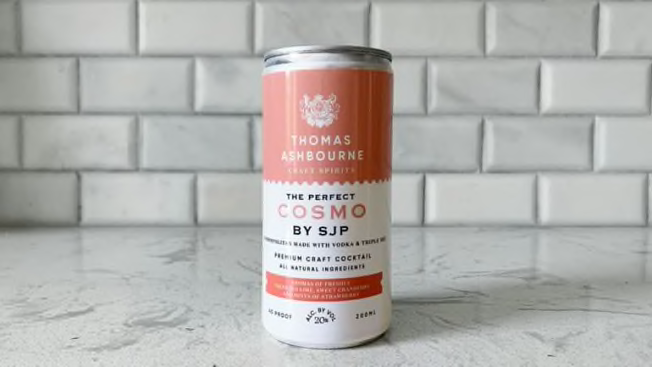
Photo: Angela Lashbrook/Consumer Reports Photo: Angela Lashbrook/Consumer Reports
Base spirit: Vodka
ABV: 20%
Price: $27.99 for a pack of 4
Where to buy: FreshDirect
First impression: a strong whiff of lighter fluid. Second impression: Do I have to keep drinking? (Tragically, I did.) I love a Cosmo. My favorite meal, which I get at Bernie’s, my No. 1 New York City restaurant, consists of a gin Cosmo, a shrimp cocktail, and some mozzarella sticks. But this is an offense to that noble dinner. It’s incredibly sweet, with more artificial strawberry flavor than the more appropriate cranberry. To its credit, it’s not lacking in tartness from the lime juice, yet even that fails to counteract the nausea I got from this canned cocktail’s overt sugar flavor. I would serve this only to my worst enemy and my closest friends’ exes.
How We Evaluated Canned Cocktails
I chose cans from a mix of popular, well-reviewed, and up-and-coming brands. Along with my husband, I tasted each can first straight, then added ice according to taste. For example, an old fashioned calls for only one ice cube, but I used a full cup of ice for my tequila paloma. I then evaluated each cocktail according to a few criteria:
Is it balanced? Cocktails should have a balanced flavor profile and not be overly sweet, watery, or bland.
Does it taste like a bar-quality cocktail? Although it’s difficult to entirely replicate a fresh cocktail in a can, I was looking for as close of an experience as possible.
Does it use quality ingredients? Ideally, a canned cocktail should use bar-quality spirits and avoid artificial flavors.
Would I buy it myself? I considered whether I would drink more of these or recommend and serve them to friends. If so, the drink was overall a winner, even if it might fall short in other ways.
Got Smelly Ice Cubes?
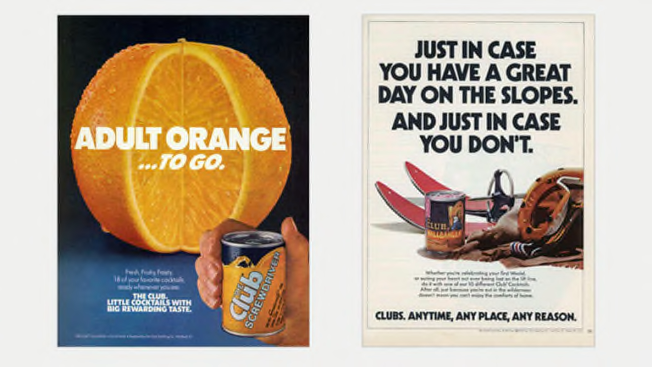
Photos: Alamy Stock Photo Photos: Alamy Stock Photo
A Short History of Canned Cocktails
I was surprised to learn that canned cocktails aren’t a new invention but have existed since the early 20th century. They’re descended from bottled cocktails, which saloons sold in the 1860s and perhaps earlier, according to David Wondrich, a cocktail historian and author of “Imbibe!”, which won a James Beard Award. By the 1890s, ready-to-drink cocktails emerged from saloons and became nationally distributed products.
“Heublein’s Club Cocktails were the pioneers here, followed by Golden Lion and Sazerac cocktails, all distributed nationwide by 1900 or 1901,” Wondrich says. Most of these drinks didn’t use fresh citrus or other juices. An early advertisement for a Heublein Club Cocktail, aimed at women, featured a proper Victorian lady instructing her butler, James, to “bring me a CLUB COCKTAIL. I’m so tired of shopping, make it a MARTINI. I need a little Tonic and it’s so much better than a drug of any kind.”
Cocktail mixing was primarily left to the professionals in the early days, hence the popularity of premixed varieties. The first canned cocktail was introduced in 1935, but Prohibition put a pin into the popularity and survival of ready-to-drink cocktails, which wouldn’t become popular again until after World War II, before once again waning in the 1990s. According to Smithsonian Magazine, it’s not clear why canned cocktails nearly disappeared from liquor store shelves and home bars. It’s certainly cheaper to buy your own base spirit and simple mixer than it is to purchase a canned cocktail, and if you have simple needs when drinking at home—or if you prefer wine or beer, particularly as craft beer exploded in popularity in the late ‘90s—there’s little need to buy canned cocktails.
So what’s with their reemergence now? Canned cocktails follow closely in the footsteps of hard seltzers like White Claw. They’ve also gained steam as growth in the ready-to-drink cocktail category exponentially accelerates.
Consumers were also, quite simply, curious about the cute little cans they saw springing up at their local liquor shops. “There was this real sort of novelty factor and an interest just by virtue of that novelty,” says Tom Geniesse, founder and owner of Bottlerocket Wine & Spirit in New York City. But “very rapidly, consumers got over any hesitation about alternative packaging.” Now, he says, they’re enthusiastic about ready-to-drink cocktails, where there’s been an “explosion” of new products.
In the early years of the recent canned cocktail renaissance—i.e., 2019 and before—many of the options were of mixed quality. Experts say they’ve been more impressed by newer releases. “Now you’re seeing people putting money, time, energy, and talent into putting something delicious in the can, which is tricky,” says Joshua Bloom, co-owner of Duke’s Liquor Box in Brooklyn, New York.
Geniesse agrees. “Now there’s this enormous flood of product on the market, which is terrific because it means that some percentage of those will be very high-quality and desirable.”
Canned Cocktail Challenges
Though canned cocktails have come a long way in only a few short years, there are still challenges that brands and drink developers are trying to overcome. Perhaps most frustrating for cocktail brands and consumers alike is that in most cases, you can’t simply take a fresh margarita and put it in a can.
“Canning is typically not considered a sterile process. The cans themselves aren’t sterile. So you usually will rely on some method of stabilization,” such as preservatives or pasteurization, says Roger Kissling, vice president of sales and customer management at Iron Heart Canning. “Oftentimes, fresh fruit juices, things that are used by a mixologist, don’t always translate well to a product that’s meant to be shelf stable for months at a time and not refrigerated.”
Fresh citrus juice has a shelf life of only a few days, even in a can, so brands often turn to pasteurized forms instead. Shelf-stable pasteurized citrus, though, doesn’t taste the same—it doesn’t taste as good—as the fresh-squeezed stuff. Sometimes, citrusy canned cocktails will taste somewhat “tinny,” but this isn’t because of the can. That’s the oxidation that occurs when citrus is pasteurized.
Some brands turn to food-grade essential oils, powdered acids like citric acid, or “comminuted” fruit concentrates, a shelf-stable purée. These workarounds can be of varying quality, but again, it means consumers have to temper their expectations. A whiskey sour in a can will taste different from a whiskey sour at your favorite bar.
Then there’s the issue of can compatibility. Most canned beverages in the U.S. are packaged in aluminum cans with interior liners that prevent the aluminum from degrading when it’s filled with acidic drinks like soda or cocktails, Kissling says. But drinks with an alcohol content of over 20 percent are incompatible with aluminum cans. These high-alcohol drinks, such as a Negroni, an old fashioned, or a Manhattan, are typically canned in stainless steel instead. But stainless steel cans, which are less common in the U.S., and aluminum cans are seamed (or closed) using different equipment, presenting further complications for canned cocktail companies that want to create different types of cocktails.
A Note About Alcohol
Consumer Reports is a very safety-oriented organization, which means I should probably remind you that alcohol isn’t very good for you. In fact, it’s quite bad. Folks with a blood alcohol content of .08 or more are 11 times more likely to die in a single-vehicle crash than those who aren’t drinking, according to Northwestern Medicine. Excessive drinking (four drinks a day or eight-plus drinks a week for women; five drinks a day or 15-plus drinks for men) also increases the likelihood of liver disease, certain cancers, high blood pressure and heart failure, and injury. Even moderate drinking—defined as one drink a day for most women and two drinks a day for most men—can increase the risk of breast cancer.
That said, a 2018 PLOS Medicine study of almost 100,000 older adults found that lifetime light drinkers who consumed one to three drinks a week had a lower risk of overall mortality, as well as a lower combined risk of cancer or death, compared with people who never drank or did so infrequently (less than one drink a week) and people who drank heavily (less than three drinks a day) or very heavily (three or more drinks a day).
It’s a limited study: It looked only at older adults, and the study’s authors said there could be confounding socioeconomic variables. But it’s some evidence that a little bit of drinking might be okay. Just keep it chill. Don’t drink every day, and certainly don’t drink and drive. Otherwise, have a fun—but safe—time. Cheers!

















